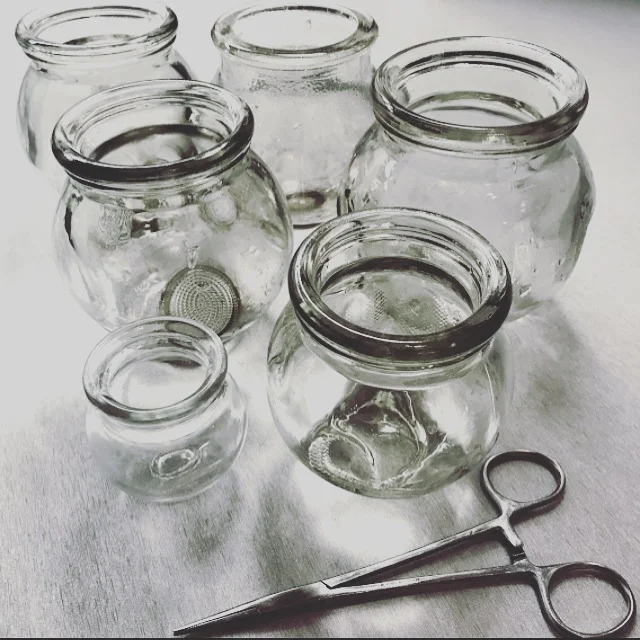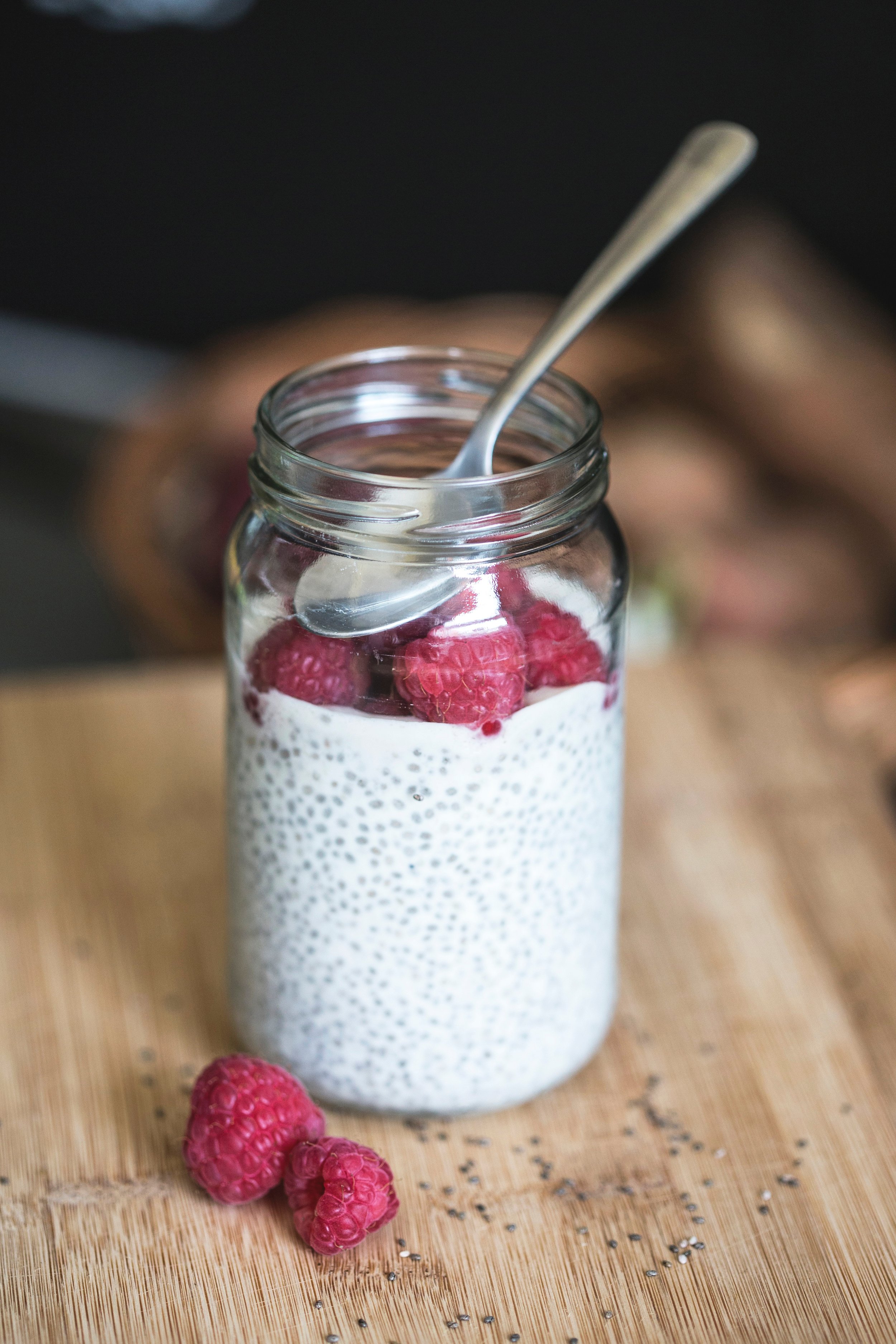How to Treat Eczema and Perioral Dermatitis Naturally
The skin is a complex and amazing organ. Its basic function is to act as a barrier for our insides, protecting them from the outside world. It helps to detoxify, sense, hydrate, regulate heat, release toxins, and protect. Many people also want to look and feel beautiful, as the skin is one of a person's most noticeable characteristics.
In Traditional Chinese medicine (TCM), the skin is governed by the Lungs and Large Intestine, the Organ Systems associated with the Metal element. This connection leads practitioners of TCM to look deeper into these systems with questions like:
Are there specific foods irritating the digestive system and being expressed on the skin?
Are there products irritating the skin?
Are specific environmental factors playing a part?
How are stress and anxiety levels impacting the body?
Skin conditions can have various underlying causes and need to be addressed on a case-to-case basis. That said, common TCM pattern differentiations that may present are the presence of heat, wind, and/or dampness with some underlying deficiency.
My favorite part of utilizing TCM for skin conditions is that it addresses the whole body, as our bodies are made up of interconnected Organ Systems that work in union with one another. It is important to note that health changes, especially ones that impact the surface of the body but are rooted deeper take time to change and heal. These conditions can get better long term with a topical fix but taking the time to address the root cause seems to have longer-lasting impacts on the body’s overall health, hence skin health.
This article will address common skin conditions, such as eczema and dermatitis, as well as various natural ways they can be treated, such as dietary changes, stress, and beauty/cleaning products and routines.
What is Eczema?
Eczema (also known as dermatitis) is a superficial skin inflammation characterized by vesicles, redness, edema, oozing, crusting, scaling, and itching. There are many types of dermatitis, so “eczema” is an umbrella term for these conditions. Some specific types express symptoms that worsen in warmer or colder weather due to food and lifestyle choices or with contact with skin irritants.
Some evidence supports that it is due to immune dysregulation with secondary inflammation as being the main cause, but better evidence supports a theory that eczema is a breakdown in the barrier function of skin in which a protein known as Filaggrin, which helps preserve the epithelial barrier, has a slight genetic defect and can lead to increased “transepidermal water loss” in the skin, decreased hydration of skin cells and cell damage. Thus, eczema can occur because the skin dries out faster, leading to cell damage. In some cases, there is also evidence of bacterial involvement.
There are various types of eczema yet the main type we will be discussing here is Atopic Dermatitis (AD).
Types of Eczema
Atopic Eczema/ Dermatitis
Atopic Eczema, also known as Atopic Dermatitis, is characterized by persistent and chronic itching, accompanied by superficial inflammation of the skin. This skin condition is often linked to a personal or family history of related disorders, such as asthma and hay fever. The interconnected nature of these conditions suggests a common underlying genetic predisposition and immune system reactivity. Individuals with atopic eczema may experience recurrent flare-ups of red, itchy, and inflamed skin, and the condition can be triggered or aggravated by various factors, including allergens, stress, and environmental factors. Understanding the familial and multifaceted aspects of atopic eczema is crucial in developing comprehensive management strategies that address both the symptoms and potential contributing factors associated with this chronic skin condition.
Contact Dermatitis
Contact Dermatitis manifests as either acute or chronic inflammation of the skin due to exposure to specific substances. This skin condition is characterized by a localized reaction that occurs when the skin comes into direct contact with irritants or allergens. The inflammatory response can range from redness and itching to the development of blisters and lesions. Contact Dermatitis is essentially a result of the skin's sensitivity to certain substances, and individuals may experience different degrees of severity based on their level of sensitivity and the potency of the irritant or allergen. Recognizing and avoiding triggers and adopting appropriate skin care measures are essential in managing and preventing the recurrence of Contact Dermatitis. Identifying the specific substances causing the reaction is crucial for effective treatment and can involve dermatological testing to pinpoint allergens contributing to skin inflammation.
Seborrheic dermatitis
Seborrheic Dermatitis is an inflammatory scaling disease primarily affecting the scalp and face. This chronic skin condition is characterized by redness, flakiness, and sometimes greasiness in the affected areas. It often manifests as dandruff on the scalp but can extend to the face, ears, chest, and other oily areas of the body. The exact cause of Seborrheic Dermatitis is not fully understood, but factors such as overproduction of skin oil (sebum), yeast growth on the skin, and individual susceptibility may contribute to its development. While Seborrheic Dermatitis is a chronic condition, it can be effectively managed with appropriate skincare routines, medicated shampoos, and, in some cases, prescription medications. Understanding the triggers and adopting a consistent skincare regimen tailored to the specific needs of individuals with Seborrheic Dermatitis is crucial in minimizing symptoms and promoting skin health.
About Atopic Dermatitis
Atopic dermatitis can manifest in various places on the body. It tends to be an allergic condition, as the name hints, an atopic allergic—disease. Symptoms of this condition can vary from person to person but usually manifest as dry, red, itchy skin, that can be seemly worse at night. It can also show up as red to brownish-gray patches, usually on the feet, hands, wrists, ankles, neck, upper chest, eyelids, and inside the bend of the knees and elbows. These patches of skin may form small raised bumps that sometimes ooze and then eventually crust, especially when scratched. Some people’s skin may turn very sensitive and raw from scratching.
This chronic skin condition tends to have periodic flare-ups. Antihistamines and topical steroids are often prescribed for this condition, and while they seem to make the rash and itching go away, they do not address the underlying cause of the imbalance within the immune system.
Some people may show an atopic presentation, and symptoms can be accompanied by asthma or hay fever. There are many reasons why a person may be experiencing AD, such as environmental allergies, asthma, or food allergies, so it is important to uncover the underlying cause. The main goal is to make the immune system more balanced and, in a way, less reactive and to heal wounds from past flare-ups.
There is no real “cure” for atopic dermatitis, but there are many natural options to help manage symptoms, itching, and new outbreaks. When using Chinese medicine to help treat AD, various modalities, such as topical herbs/ lotions, internal herbs, or acupuncture, can be utilized to help calm the immune system down.
Conditions of the skin often are not quick fixes and need to be addressed from a whole body perspective.
How Is Eczema/Atopic Dermatitis Diagnosed According To TCM?
Traditional Chinese Medicine works on developing individualized treatment plans from a detailed analysis of one’s pattern presentation by asking a series of questions, listening to the pulse, and observing the tongue, skin, and other body parts. Some common TCM patterns that are presented when a patient has eczema are:
Damp Heat with Wind
People who present with a damp-heat-based condition of dermatitis will often also show signs of clammy skin, tendency to sweat, little thirst or wanting to drink cold beverages, and dry stool. Skin lesions will tend to be itchy and burning manifesting more on the lower body, especially around the groin. Lesions will present with obvious inflammation- crusting, swelling, and discharge.
Spleen Deficiency with Dampness
Lesions will manifest slowly and be mildly itchy, scaly, and crusty. People may experience low appetite, loose or sticky stools, a heavy sensation, and fatigue.
Dampness combined with Wind Dryness due to Blood deficiency
This is a chronic condition that has repeated attacks that can last for years, limited to a certain part of the skin with clear demarcation; thick & rough skin with pigmentation, and patchy & scaly lesions. Papulae, blisters, and exudations can appear while the skin is irritated, it will often become moist and ooze liquid and have mild or severe itching.
Heat in the Blood with Wind
Lesions and redness will manifest more on the upper body and will be more dry and scaly. The itching will be intense, especially at night. The skin will tend to scar more easily.
Treating Atopic Dermatitis
Preventing and managing Atopic Dermatitis requires a comprehensive approach aimed at minimizing triggers and maintaining skin health. As individuals with Atopic Dermatitis often experience recurrent flare-ups and heightened sensitivity, preventive strategies focus on addressing environmental factors, skincare practices, and lifestyle choices. By identifying and avoiding potential allergens or irritants, adopting proper skincare routines, and implementing lifestyle adjustments, individuals can create a protective barrier against the onset and exacerbation of Atopic Dermatitis symptoms. This multifaceted prevention approach aims to enhance skin resilience, reduce inflammation, and improve the overall quality of life for those affected by this persistent skin condition.
Look at your diet
As with most health conditions, this is the first step to begin changing the current state of your health. Food sensitivities seem to play a big part and it may be challenging to figure out what exactly is aggravating your skin, so I suggest looking into the elimination diet (more on this soon). This diet is very strict and usually takes about 5-6 weeks to complete, but it is considered the “gold standard” when it comes to figuring out food sensitivities. Some common sensitives are gluten, dairy, eggs, corn, soy, sugar, and coffee. I know, sorry- all the good! It can be extremely helpful to increase your intake of Omega-3 fatty acids, you can do this through supplementation or foods such as wild-caught salmon, olive oil, flax, pumpkin, and chia seeds. Dark green leafy vegetables and sea vegetables are very beneficial due to their high chlorophyll content. Beta-carotene-rich foods such as carrots, winter squash, and pumpkin can help boost the liver's detoxification mechanism and purify the blood. Some foods that may aggravate this condition are spicy, fatty foods, sweets, and seafood.
Moisturize
You can moisturize your skin regularly with an organic single ingredients moisturizer such as shea butter, cocoa butter, or coconut oil. And remember to AVOID SCRATCHING!
Avoid Harsh Soaps
Maybe even stop using soap in general, and wash with warm water (not too cold or too hot)
Au Natural
In general, try to stay as natural as possible when it comes to beauty/ cleaning products. This tip is especially important when dealing with what you wash your clothes with- so try to use natural or homemade laundry detergent and always remember to wash new clothes before wearing them. Clothing made from natural fibers may be easier on the skin.
Avoid Known Offending Agents
If your skin is particularly sensitive to things such as nickel jewelry, or specific lotions, stay away if you can!
Antihistamines/ Corticosteroids
Your doctor or dermatologist may suggest using these topically and/or orally.
Supplementation
-Omega-3 Essential fatty acids, especially high in EPA, such as fish oil, algae oil, or flax seed oil
-Zinc 30 mg TID
-Vit. A 50,000 IU/d
What is Perioral Dermatitis?
Perioral dermatitis, also known as Peri-orifical dermatitis, is a condition of the skin that manifests upon the face and around the mouth (peri- a prefix meaning- around; about./ oral -relating to the mouth) and is not a condition of eczema but may look similar to Atopic Dermatitis. The cause of this condition is unknown but there are many natural tips to help prevent a flare-up and keep your skin healthy and clear. It often presents as a slightly bumpy red rash, this is not usually accompanied by itching. This skin condition may come and go through one’s life and it tends to impact women around the age of 15-45, much more than men or children. This rash is not contagious.
After obtaining a correct diagnosis for this condition, it is important to stop using topical steroid creams and chemical face lotions, which are known to make this condition worse. Even fluorinated toothpastes have been known to upset this condition. The best advice is to stop applying anything at all you your face- soap, makeup, lotions- until your skin clears and you can make some lifestyle changes (listed below). Perioral dermatitis is, unfortunately, a common skin condition, but can be managed with the correct care.
How to Treat Perioral Dermatitis
Look at your Diet
As with most health conditions, this is the first step to begin changing the current state of health. It may be challenging to figure out what exactly is aggravating your skin, so I suggest looking into the elimination diet (more on this soon). This diet is very strict and usually takes about 5-6 weeks to complete, but it is considered the “gold standard” when it comes to figuring out food sensitivities. Some common sensitives are gluten, dairy, eggs, corn, soy, sugar, and coffee. I know, sorry- all the good!
Check your Stress
This is a general rule for all health conditions. When the body is in a heightened state of stress, many conditions, such as GI complaints, skin irritation, or sleep, get aggravated. It is important to stay positive and remember that health and healing is a process. Check this article out to learn some stress-reducing tips. (How to reduce stress with Chinese Medicine)
Stop Using Topical Steroids on Your Face
Stopping these may make your skin seem to get worse initially, but it should start to improve after a few days. (It is important to get a correct diagnosis for perioral dermatitis as PD will be aggravated by topical steroids, while eczema may respond well to steroid lotions.) For that matter, stop using any creams or lotions on your face for a little while. Your skin, though beautiful, is a bit more sensitive for some reason, so let it breathe naturally. Then, when you have made some other changes in your diet and lifestyle, you can start to incorporate natural plant-based oils or lotions. Read this article to learn more! (Plant-based Body Oils)
Avoid Harsh Soap
Stop washing your face with soap if you haven’t done so already. Warm water is good enough! (PD does not like water too hot or too cold. )When your skin has begun to heal and clear then you can look into natural chemical-free cleansers for sensitive skin.
Au Natural
In general, stay as natural as possible. You have been blessed with sensitive skin, and it’s a constant reminder for you to stay close to the earth. Certain chemicals such as Sodium Lauryl Sulfate (really any sulfate-containing products) and Fluoride will aggravate this condition. So make sure you check the labels of products you use- laundry detergent, soaps, makeup, even toothpaste! Any product that comes in contact with your body actually. Try to stay away from makeup in general, at least until your skin clears and calms down. Then begin experimenting with natural makeups and lotions to see how your skin responds.
Use a Jade Roller
This easy tip can help to calm inflamed skin and increase circulation and lymphatic flow to your face. This article explains How to use a Jade Roller in more detail!
Observation
This is a huge diagnostic tool within Chinese Medicine. Seemingly simple enough but often it is overlooked. It is helpful to keep a journal and jot down changes you notice in your skin and to help pinpoint what has triggered a flare.
What are TCM Treatments for these Conditions?
Acupuncture
Topical Herbs
Internal Medicine
Every Chinese medical practitioner will treat conditions slightly differently depending upon their expertise and experience. Patients will also present with individualized symptoms, patterns, and sensitivities. The primary treatments will most likely be through diet and herbal remedies. These formulas will be prescribed according to the patient’s pattern diagnosis. Chinese herbs can be taken in the form of bulk tea decoctions, granules, or tea pills and will most likely change as the patient’s symptoms change presentation. There is also a wide range of topical applications that can be used with herbal medicine such as ointments, compresses, or external washes.
Acupuncture can also help address the root causes of the conditions, such as using specific points to help clear dampness or heat from the body or strengthen the Spleen. The Spleen organ system is often looked at according to these conditions as regulating the digestive system will help regulate skin health, dampness, and toxin accumulation and detoxification. Certain points can be chosen to help stop itching, boost underlying deficiencies, and calm the mind/ ease stress.
Checking in with a well-versed healthcare provider or Chinese medical practitioner is important, especially if you have a pre-diagnosed condition or are on medications. Our bodies are sensitive and can react in unwanted ways sometimes due to drastic changes. Know that you are not alone and if you are dealing with conditions such as these, there are plenty of natural options to help you heal. Your body wants and strives to be healthy!
*DISCLAIMER- All information provided on this site is not meant to take the place of the advice of your doctor/ health care provider, but is intended to help you make more informed decisions and take greater responsibility for your own health. Please do not use this information to diagnose or develop a treatment plan without consulting a qualified health care provider. Do not hesitate to email me with questions and please make an appointment with me if you would like to discuss any information presented in further detail.
REFERENCES
American Academy of Dermatology- www.https://www.aad.org
Chamlin SL and Lawley LP. “Perioral dermatitis.” In: Wolff K, et al. Fitzpatrick’s dermatology in general medicine (7th edition). McGraw Hill Medical, USA, 2008:709-12.
LodenM, Andersson AC, LindbergM. The number of diagnostic features in patients with atopic dermatitis correlates with dryness severity. Acta Derm Venereol 1998;78:387-8









































These foundational books offer a clear and accessible path into the world of Acupuncture and Chinese Medicine. Whether you're studying to become a practitioner or simply curious about the theory behind the treatments, these titles will deepen your understanding and appreciation for this ancient healing system—one thoughtful page at a time.